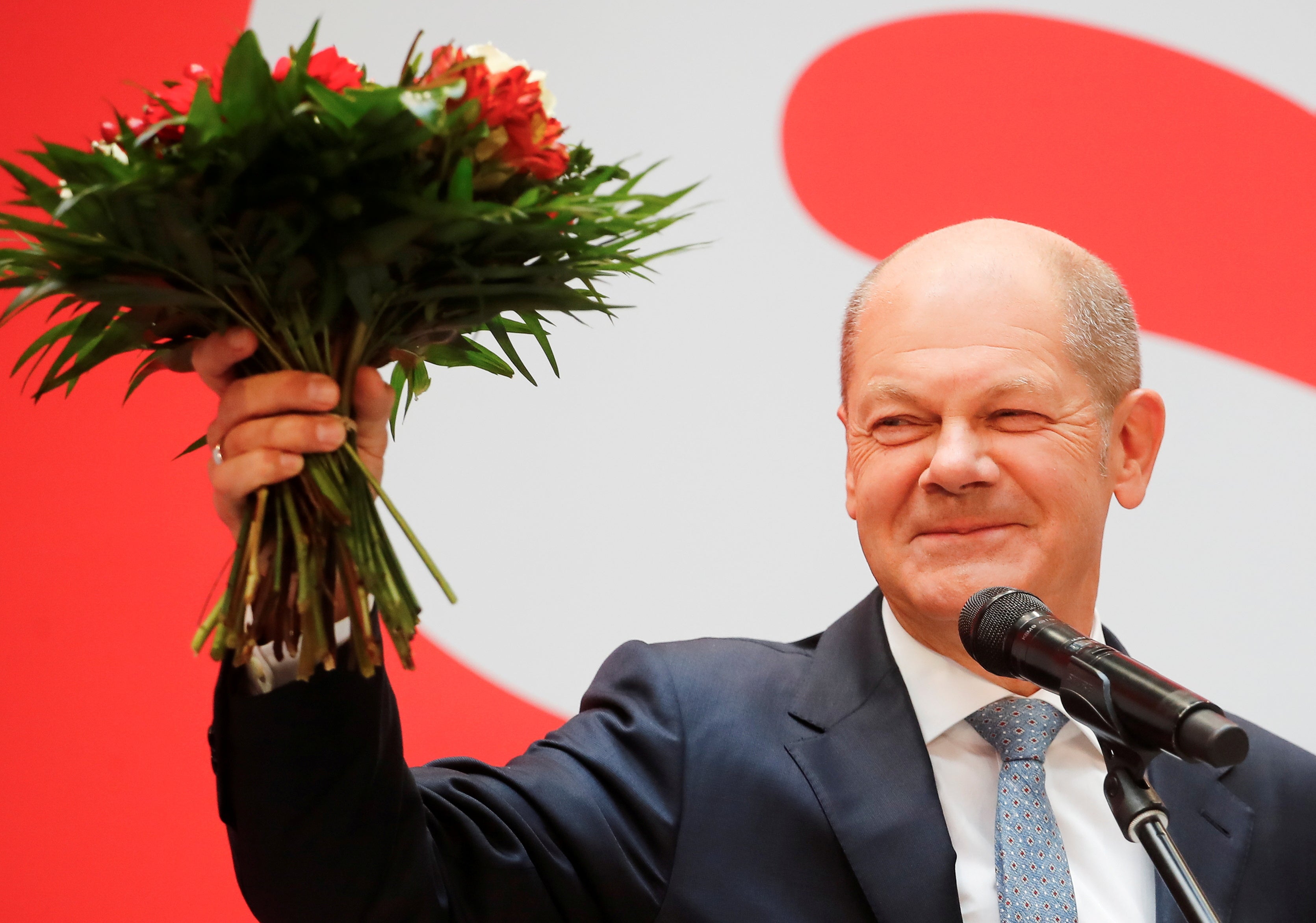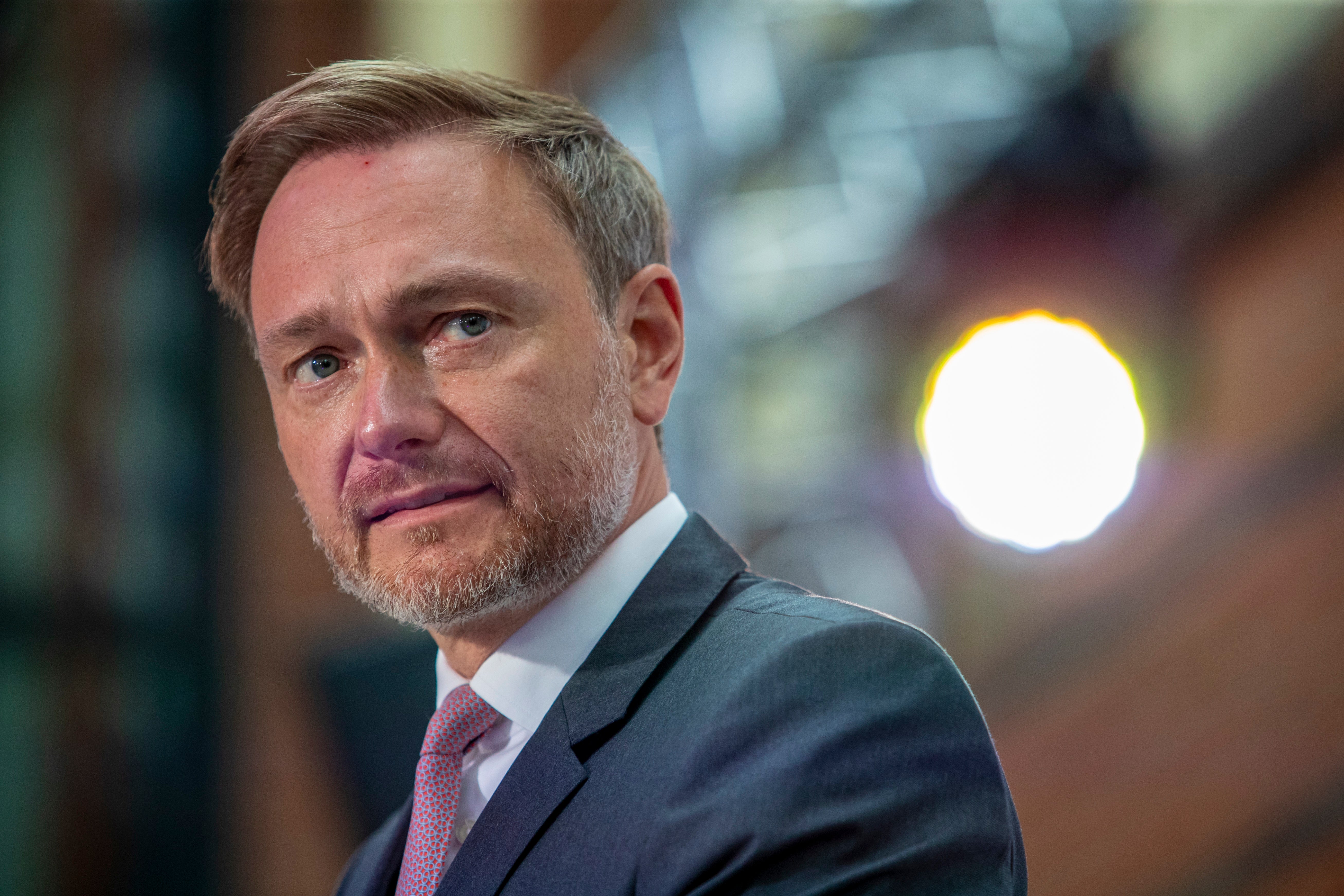German election: Scholz prepares ground for ‘traffic light coalition’, inviting Greens and FDP to talks
The Independent looks at the other possible coalition combinations – and which are the most likely

Your support helps us to tell the story
From reproductive rights to climate change to Big Tech, The Independent is on the ground when the story is developing. Whether it's investigating the financials of Elon Musk's pro-Trump PAC or producing our latest documentary, 'The A Word', which shines a light on the American women fighting for reproductive rights, we know how important it is to parse out the facts from the messaging.
At such a critical moment in US history, we need reporters on the ground. Your donation allows us to keep sending journalists to speak to both sides of the story.
The Independent is trusted by Americans across the entire political spectrum. And unlike many other quality news outlets, we choose not to lock Americans out of our reporting and analysis with paywalls. We believe quality journalism should be available to everyone, paid for by those who can afford it.
Your support makes all the difference.The contours of the next German government began to take shape on Tuesday when the centre-left Social Democrats (SPD) – who came out on top in Sunday’s parliamentary elections – extended an offer to meet leaders of the Greens and liberal Free Democrats to explore the creation of a three-party coalition.
Moving to defy ominous speculation of a months-long period of uncertainty in Germany, the SPD fancies itself as the “choice of the people” to lead the next government after winning 25.7 per cent of the vote on Sunday, an increase of 5.2 percentage points from the last election in 2017. To achieve a majority of seats in parliament, the SPD is eager to patch together a coalition of “election winners” together with the Greens, who gained 6.4 points to 14.8 per cent and the FDP, which rose 0.8 point to 11. per cent.
The only trouble is that the conservative Christian Democrats (CDU/CSU) have stubbornly refused to concede defeat – reminding some in Germany of Donald Trump’s anti-democratic behaviour after the 2020 US elections. The CDU/CSU hasn’t congratulated Scholz even though retiring chancellor Angela Merkel’s party lost nearly 9 percentage points to end up behind the SPD with just 24.1 per cent. Party leader Armin Laschet hopes to somehow lure the Greens and FDP into a three-party coalition with him – entirely legal, yet morally questionable.
“We’ve invited the Greens and FDP to meet this week, if they’d like, to start exploratory talks,” said Rolf Mutzenich, the newly elected leader of the enlarged SPD parliamentary group. “We’re ready. Not only ready for a quick start but also ready to have reliably concrete talks.”
The Greens and FDP had already stolen some of the thunder a day earlier when they announced they planned to meet together first to explore what their common interests are – and chart out a joint strategy to be able to present to the two rival larger parties that are eager to win their favour.
After the 2017 German elections it took nearly six months, to March 2018, for a new government to take power – because talks for a possible “Jamaica coalition” collapsed after more than a month of detailed negotiations. All the parties want to avoid such a prolonged process and debacle of collapsed talks this time. That’s one reason why the smart money is betting that the two smaller and more dynamic parties – the Greens and FDP – are taking control of the process this time and they will probably want to move quickly and have a new government in place within a month or so.
Normally, the smaller parties wait around for a larger party to offer coalition talks. But together the Greens and FDP won a total of 26.3 per cent of the vote, or 0.6 points more than the SPD, and will have more seats in parliament.
Here is a look at the range of outcomes from the upcoming coalition talks and possible coalition combinations that could emerge:
Most likely outcome: ‘traffic light coalition’
The SPD, Greens and FDP could start exploratory talks this week and full-fledged coalition negotiations in the next week or so for a so-called Ampelkoalition or “traffic light coalition”.
The name comes from the parties’ banner colours – red for the SPD, green for the Greens and yellow for the pro-business FDP. There has never been an Ampelkoalition at the national level before, which makes this all unchartered territory. There have been some such coalitions at the state level – some collapsed in the 1990s and early Noughties, but Rhineland-Palatinate has had a successful Ampel for years.
The SPD and Greens could probably get a quick deal together on their own within a few weeks, but without a third party they don’t have enough seats for a majority. They would need the FDP this time. The pro-business, anti-tax FDP is more comfortable with the CDU/CSU, with whom it shared power at the national level from 2009-2013. It clearly expressed a preference for the CDU/CSU before the election but pragmatic, smooth-talking chair Christian Lindner is eager to get back into government after eight years as a small, insignificant opposition party.

The “Traffic Light Coalition” is the preferred choice of voters in opinion polls. It would also represent a coalition made up of the three parties that gained votes in this election – from 5.2 percentage points for the SPD and 6.4 points gain for the Greens and an increase of 0.8 points for the FDP.
Look for the SPD and Greens to offer FDP leader Lindner the powerful finance ministry job as bait to join the coalition and probably promise not to raise taxes: they want to, but the FDP certainly doesn’t.
Less likely outcome: ‘Jamaica coalition’
This would be a coalition made up of the CDU/CSU – the losers on Sunday – together with the Greens and FDP. It’s called Jamaica because the party colours – black, green, yellow – match those of the Jamaican national flag.
This coalition has never been tried at the national level either, but it came close to taking power four years ago, until the FDP’s Lindner dramatically broke off the talks late one night after a month of negotiations. Both his popularity and that of his party nosedived after that – and it left the country rudderless for another three months.

The Greens have made it clear before and after the election that they are not interested in a deal with the CDU/CSU. Not only is the CDU/CSU ideologically further away from the Greens than the SPD, but the Greens blame the conservatives for the stagnation that has crippled Germany in recent years. Greens chancellor candidate Annalena Baerbock said in debates that the CDU/CSU belongs in opposition. But the Greens have cleverly not shut the door entirely on a Jamaica coalition in order to maintain some leverage against the SPD.
The drift in sentiment away from “Jamaica” has become more palpable after the election and the CDU/CSU smell and sound more and more like the big losers. Had the CDU/CSU finished even with the SPD or a fraction of a percentage point behind the SPD, such a coalition might have been easier to imagine than it is now. Yet Laschet is desperate to make Jamaica work because he might be out of his job as party chair otherwise. So expect him to pull out all the stops to lure the Greens and FDP into bed with him.
Rather unlikely coalition: ‘grand coalition’
This was called a “grand coalition” back in the day when the CDU/CSU and SPD were large, big-tent parties with between 35-50 per cent of the vote. Both have shrunken to the mid-20s – in part because there is so much voter disenchantment with the two parties that shared power in loveless alliances over 12 of the last 16 years.
This is unlikely to happen because the SPD has made it abundantly clear it is done with the CDU/CSU. Merkel has siphoned support from the SPD over the last 16 years – she has pilfered many of their best ideas and sold them as her own. Also making this unlikely is that it is hard to imagine the CDU/CSU joining forces with the SPD as their junior coalition partners. It’s never happened before at the national level and is hard to imagine it ever happening,
Ain’t gonna happen: ‘Red-Red-Green’
Progressives had hoped that the three left-of-centre parties could form a so-called “Red-Red-Green” coalition made up of the SPD, Greens and far-left Linke party that traces its roots to the communist SED party responsible for the Berlin Wall and decades of communist suppression in East Germany. But the Linke, only popular in the east, fell to below 5 per cent and will only have a handful of seats in parliament due to a quirk in the laws allowing it representation because its candidates won three constituencies outright – all in east Berlin. This far-left coalition will not be possible because the Linke’s fall means there are not enough seats for a majority.
Join our commenting forum
Join thought-provoking conversations, follow other Independent readers and see their replies
Comments